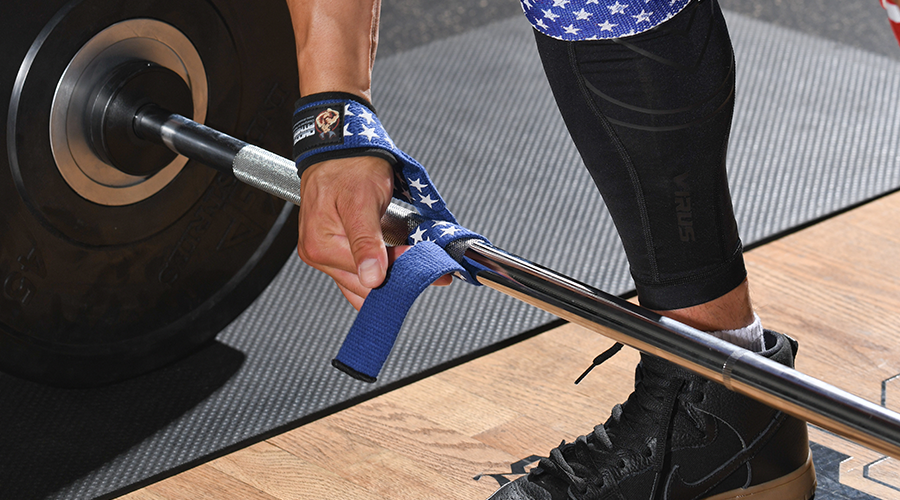IMAGINE yourself lifting bars! Being a hairs’ breadth away from seizing the glory of breaking your personal records and- wait, what? Your grip gives up and you are shaken awake from the reverie of entering an unknown territory of the number of reps. They were right in saying that good things don’t last long…
But what if I tell you that a golden parchment will have the answer you have spent eternity seeking for? OFCOURSE YOU’D BE DYING TO HEAR THE ANSWER!
LIFTING STRAPS
These two words are the answer to your countless calls. But beware! It’s only a temporary fix; excess use of anything NEVER ends well. Think of it as a medicinal drug- advantageous only when used in the right doses, else wise, it either has no effect or results in something worse, i.e. addiction. Those with small, clammy, fatigue-ridden hands and lack of grip strength may use it to their benefit. Over-use will do no good but will counter-attack and result in not only deteriorating grip-strength but also loss of muscle flexibility and power.
Purpose of Lifting Straps
The purpose of lifting straps is as simple as stated: An aid to keep the grip secure so the bar doesn’t slip-off.
Great for occasional use, this strap, made of varying types of material (preferably nylon), is fastened on the wrist, to allow a firm hold on the bar. It is like gluing the weights to your wrists/hands. Paradoxical outlooks are observed of the use of lifting straps; some consider it a cheat to fake grip strength, while others render it as a blessing allowing them to not only deadlift but also perform greater reps.
Lifting straps can be used for a variety of reasons in strength training by multiple types of athletes. The main reason for using a strap is to support grip. A strap enables an athlete to hold more weight than their normal grip can handle.
Weight lifters use traps in extensive weight training exercises while performing heavy pulls and powerlifting. The main goal of using a strap is to overload the muscle (especially the big muscle group) and nervous system when the grip is fatigued and strengthen the body in the process. A well-prepared game plan is required for the utilization of straps. The small and bendable construct of Lifting Straps makes it an easily portable accessory that doesn't require a ton of space in the gym bag.
How to Find Your Best Pair
Do you ever look up 'lifting straps' online or in stores and end up in a quicksand of confusion simply because you are unsure which strap to buy? The one with the greatest appeal ends up being out of your budget? Or that beautiful leather strap gave up in one heavy lift? Or do the peculiar and different shapes of straps boggle your mind?
Worry no more, the instructions below will not only acknowledge you with the diversity of lifting straps in the market but will also allow you to choose the best pair for yourself.
TYPES OF LIFTING STRAPS
There are generally 3 types of lifting straps:
- Single Loop
- Lasso
- Figure 8
Single Loop/ Speed Strap/ Olympic strap:
Think of this one as an oversized band. This gym tool is highly versatile in its usage and it easy on the pocket. It’s considered to be the best when it comes to weight-lifting. Looking at its pros, they are not only easy to attach, but also easy to remove or bailout of a failed lift. On the darker side, their tightness around the wrist is not adjustable, and less material pertains to a less secure grip. Those with weaker grips may face troubles in using this type of wrist straps.
Lasso:
A lifting strap of high versatility, the lasso, like its former the single loop strap is low on bucks. The market offers a plethora of choices within these lasso straps; with variations in not only the quality of material but also the size of straps. When compared with the Olympic Strap, it offers greater security on the grip. This kind of wrist strap has a loop, followed by a strip. The loop is to be worn as a band on the hand, while the remaining strap is wrapped around the bar. However, when it comes to wrapping the remaining material around the bar, it often proves to be a difficult task to perform, especially with one free hand. And in unfortunate circumstances, when a lift fails, the extra material makes it hard to manage and bailout. Hence, it is seldom used on the international platform, i.e. The Olympics.
Figure 8 Straps:
While the figure 8 style strap offers the least versatile, it offers the highest security. As the name suggests, this strap is constructed in the shape of the number 8. Made with extra padding to support the wrist during heavy pulls, this strap is ideal when performing maximal pulling lifts such as the deadlift and other big muscle group type pulling.
Having an inhumanely secure grip, this style strap doesn't offer a quick-release, therefore, it's seldom suggested in cases where dropping the weights is required or foreseen. These straps are often heavily made with a lot of material, as they’re designed for holding maximal loads.
TO SUM IT UP
- Which straps are the most ‘Versatile’?
- Loop Straps and Lasso have the highest versatility, but the better choice is Single Loop Straps with Nylon Webbing.
- Which straps are the Best for weight lifting?
- Loop Straps are best recognized to be the best for weight lifting.
- Which lifting straps are the Most Secure?
- As mentioned above, Figure 8 Strap is rendered the absolute best when it comes to security.
- Which wrist strap has the best Durability?
- the Lasso strap! A synthetic nylon lasso wrist strap is specifically designed for deadlifts and other pulling movements.
- Which material is highly recommended when it comes to straps?
- Having a minimal stretching tendency, Nylon is great for heavy lifting.













